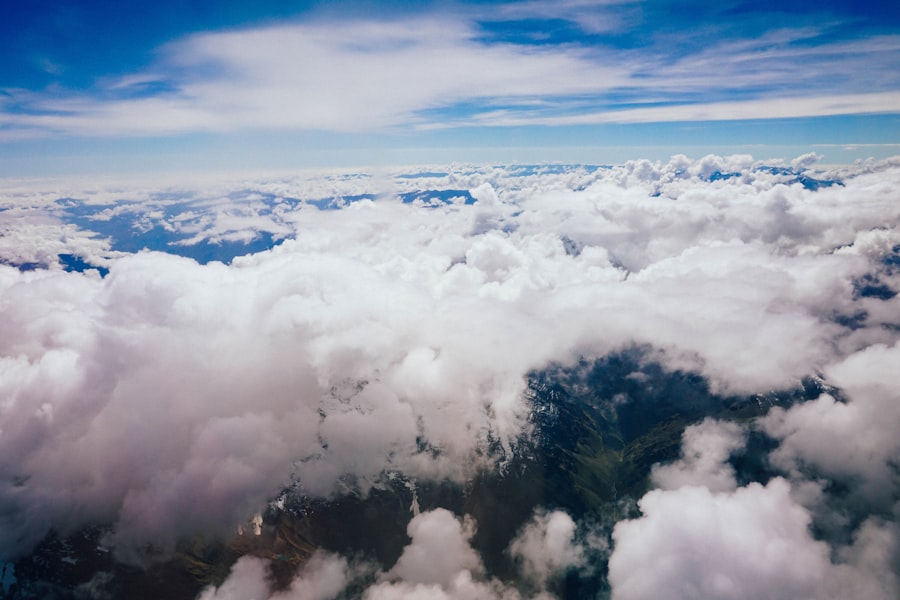Download links
How to install Exhilarating 8k8 Wingsuit Flying: A Thrilling Experience APK?
1. Tap the downloaded Exhilarating 8k8 Wingsuit Flying: A Thrilling Experience APK file.
2. Touch install.
3. Follow the steps on the screen.
Description
Wingsuit flying, a breathtaking blend of human ingenuity and the desire for flight, has a rich history that dates back centuries. The concept of gliding through the air with a suit designed to enhance lift can be traced back to the early 20th century. One of the earliest recorded instances of wingsuit design was by the Italian inventor Leonardo da Vinci, who sketched various flying machines, including a primitive version of a wingsuit.
However, it wasn’t until the late 20th century that wingsuit flying transitioned from mere sketches and theoretical designs into a practical reality. The modern wingsuit, as we know it today, began to take shape in the 1990s. Pioneers like Patrick de Gayardon and Jari Kuosma played pivotal roles in developing wingsuits that allowed for controlled flight.
De Gayardon, in particular, is credited with creating the first functional wingsuit that enabled pilots to glide through the air rather than simply fall. His innovations included the use of fabric wings between the arms and legs, which increased surface area and allowed for greater lift. This marked a significant turning point in the sport, as it opened up new possibilities for aerial maneuvers and extended flight times.
As wingsuit flying gained popularity, it attracted a diverse group of enthusiasts, from skydivers seeking new thrills to adventurers looking for unique experiences. The sport’s growth was further fueled by advancements in materials and technology, leading to lighter, more aerodynamic suits that enhanced performance. By the early 2000s, wingsuit flying had established itself as a distinct discipline within the skydiving community, with dedicated competitions and events emerging worldwide.
The combination of adrenaline, skill, and breathtaking views made wingsuit flying an alluring pursuit for many.
Key Takeaways
- Wingsuit flying has a history dating back to the early 20th century, with pioneers like Clem Sohn and Rex Finney experimenting with early versions of the wingsuit.
- The physics behind wingsuit flying involves the principles of aerodynamics and lift, allowing pilots to glide through the air at high speeds while maintaining control and stability.
- Becoming a wingsuit pilot requires extensive training in skydiving, canopy piloting, and wingsuit flying techniques, as well as physical fitness and mental preparedness.
- Some of the best locations for wingsuit flying include the Swiss Alps, the Dolomites in Italy, and the mountains of Norway, offering breathtaking scenery and challenging terrain for experienced pilots.
- While wingsuit flying can be an exhilarating experience, it also comes with inherent risks, and pilots must adhere to strict safety measures, including proper gear, thorough pre-flight checks, and ongoing skills development.
- The future of wingsuit flying holds promise for innovations in gear and technology, as well as advancements in safety measures and training techniques to further improve the sport.
The Physics Behind Wingsuit Flying: How Does It Work?
Understanding the physics behind wingsuit flying requires a grasp of basic aerodynamics and the forces at play during flight. When a wingsuit pilot leaps from an aircraft or a high cliff, they initially experience free fall, where gravity pulls them downward at an accelerating rate. However, unlike traditional skydiving, where the body is streamlined to minimize drag, a wingsuit is designed to maximize lift through its unique shape and surface area.
The suit’s wings create a larger profile against the oncoming air, allowing pilots to glide rather than plummet straight down. The primary forces acting on a wingsuit pilot are lift, weight, drag, and thrust. Lift is generated by the wings of the suit as air flows over and under them, creating a pressure difference that allows the pilot to rise slightly or maintain altitude during descent.
The angle of attack—how the pilot positions their body relative to the airflow—plays a crucial role in optimizing lift. By adjusting their body position and wing configuration, pilots can control their flight path and speed. Drag, on the other hand, is the resistance encountered as the pilot moves through the air.
Wingsuit pilots must balance lift and drag to achieve optimal performance. A well-designed wingsuit minimizes drag while maximizing lift, allowing for longer flights and more maneuverability. Additionally, thrust can be generated by the pilot’s movements; by shifting their weight or using their arms and legs to push against the air, they can gain speed or change direction.
This intricate dance of forces enables wingsuit pilots to navigate through the skies with remarkable precision.
The Training and Preparation: What It Takes to Become a Wingsuit Pilot

Becoming a wingsuit pilot is not merely about donning a suit and jumping from great heights; it requires extensive training and preparation to ensure safety and proficiency in this exhilarating sport. Aspiring wingsuit pilots typically start their journey by gaining experience in skydiving. Most experts recommend accumulating at least 100 jumps in traditional skydiving before transitioning to wingsuit flying.
This foundational experience helps pilots develop essential skills such as freefall control, body positioning, and awareness of altitude. Once a skydiver has reached the requisite number of jumps, they can begin specialized wingsuit training. This often involves attending courses led by experienced instructors who provide guidance on techniques specific to wingsuit flying.
Training sessions cover various aspects, including understanding the suit’s aerodynamics, mastering body positioning for optimal lift and control, and learning how to navigate during flight. Pilots also practice emergency procedures to prepare for potential malfunctions or unexpected situations during their jumps. In addition to technical skills, mental preparation is equally important for aspiring wingsuit pilots.
The sport demands a high level of focus and situational awareness, as pilots must constantly assess their surroundings and make quick decisions during flight. Visualization techniques and mental rehearsal can help pilots build confidence and improve their performance. Furthermore, physical fitness plays a role in training; maintaining strength and agility can enhance a pilot’s ability to maneuver effectively in the air.
The Best Locations for Wingsuit Flying: Where to Experience the Ultimate Thrill
| Location | Altitude (feet) | Distance (miles) | Scenery |
|---|---|---|---|
| Swiss Alps | 10,000 | 5 | Mountains, lakes |
| Zion National Park, USA | 8,000 | 3 | Canyons, rock formations |
| Interlaken, Switzerland | 14,000 | 7 | Lakes, valleys |
| Chamonix, France | 12,000 | 6 | Mont Blanc, glaciers |
Wingsuit flying offers an unparalleled thrill that is often amplified by breathtaking landscapes and stunning backdrops. Certain locations around the world have become renowned for their ideal conditions and picturesque settings for this exhilarating sport. One such location is Lauterbrunnen Valley in Switzerland, often referred to as the “Valley of 72 Waterfalls.” With its dramatic cliffs and stunning alpine scenery, Lauterbrunnen provides an incredible environment for wingsuit pilots seeking both adventure and beauty.
Another popular destination is the stunning fjords of Norway, particularly around the region of Aurlandsfjord. The steep cliffs and deep waters create an awe-inspiring backdrop for wingsuit flights. Pilots can launch from high altitudes and glide over the fjord’s shimmering waters while enjoying panoramic views of snow-capped mountains and lush greenery below.
The combination of natural beauty and thrilling flight makes Norway a top choice for wingsuit enthusiasts. In addition to these iconic locations, there are numerous other spots around the globe that cater to wingsuit flying. The Dolomites in Italy offer dramatic rock formations and breathtaking vistas that attract pilots from all over.
Similarly, the mountains of Utah in the United States provide diverse terrain and favorable weather conditions for wingsuit flights year-round. Each location presents its own unique challenges and rewards, making them ideal playgrounds for those seeking the ultimate thrill in wingsuit flying.
The Risks and Safety Measures: Understanding the Dangers and How to Stay Safe
While wingsuit flying is undeniably thrilling, it also comes with inherent risks that require careful consideration and preparation. The nature of the sport involves high speeds, complex maneuvers, and proximity to terrain or obstacles, all of which can lead to dangerous situations if not approached with caution. One of the primary risks is misjudging altitude or distance from terrain during flight; this can result in collisions with cliffs or other obstacles if pilots do not maintain situational awareness.
To mitigate these risks, safety measures are paramount in wingsuit flying. First and foremost, thorough training is essential; aspiring pilots must be well-versed in emergency procedures and have a solid understanding of their equipment. Many experienced wingsuit pilots emphasize the importance of jumping with a reliable parachute system equipped with an automatic activation device (AAD), which deploys the parachute if the pilot fails to do so at a predetermined altitude.
Additionally, pilots should always conduct pre-jump checks on their gear to ensure everything is functioning correctly before taking off. This includes inspecting the wingsuit for any damage or wear that could affect performance during flight. Furthermore, flying with experienced partners can enhance safety; having fellow pilots nearby allows for better communication and support during jumps.
Finally, choosing appropriate weather conditions is crucial; strong winds or poor visibility can significantly increase risks during flight.
The Future of Wingsuit Flying: Innovations and Advancements in the Sport

As wingsuit flying continues to evolve as a sport, innovations in technology and design are paving the way for new possibilities in aerial exploration. One significant advancement is the development of more sophisticated materials that enhance performance while ensuring safety. Lightweight fabrics with improved durability allow for greater maneuverability without compromising structural integrity during flight.
These advancements enable pilots to push their limits further than ever before. Moreover, advancements in wearable technology are beginning to play a role in enhancing safety and performance in wingsuit flying. Devices such as altimeters with integrated GPS tracking provide real-time data on altitude, speed, and location during flights.
Additionally, virtual reality (VR) technology is being explored as a training tool; aspiring pilots can practice maneuvers in simulated environments before attempting them in real life. The future of wingsuit flying also holds promise for increased accessibility through community engagement and education initiatives.
As more people become aware of this thrilling sport, opportunities for training programs and workshops are likely to expand. This could lead to a broader demographic participating in wingsuit flying while emphasizing safety practices and responsible flying techniques.
From its historical roots to its current status as an extreme sport, it continues to captivate adventurers worldwide while pushing boundaries in aerodynamics and safety practices.
FAQs
What is 8k8 Wingsuit Flying?
8k8 Wingsuit Flying is an extreme sport that involves flying through the air using a specialized jumpsuit called a wingsuit. The “8k8” refers to the goal of flying at an altitude of 8,000 meters (26,247 feet) and then landing safely on the ground.
How does 8k8 Wingsuit Flying work?
In 8k8 Wingsuit Flying, participants jump from an aircraft or a high-altitude location and glide through the air using a wingsuit. The wingsuit is designed to increase the surface area of the human body, allowing the flyer to achieve lift and glide for an extended period of time.
What are the risks involved in 8k8 Wingsuit Flying?
8k8 Wingsuit Flying is an extremely dangerous sport, and participants face a number of risks, including the potential for mid-air collisions, equipment malfunctions, and the challenges of navigating through changing wind patterns at high altitudes.
What kind of training is required for 8k8 Wingsuit Flying?
Participants in 8k8 Wingsuit Flying typically undergo extensive training in skydiving, BASE jumping, and wingsuit flying. They also receive instruction on how to use specialized equipment and how to navigate safely through the air at high speeds and altitudes.
What equipment is used in 8k8 Wingsuit Flying?
Participants in 8k8 Wingsuit Flying use a wingsuit, a parachute, and other safety equipment such as helmets and altimeters. The wingsuit is designed to provide lift and control during flight, while the parachute is used to safely land on the ground.





